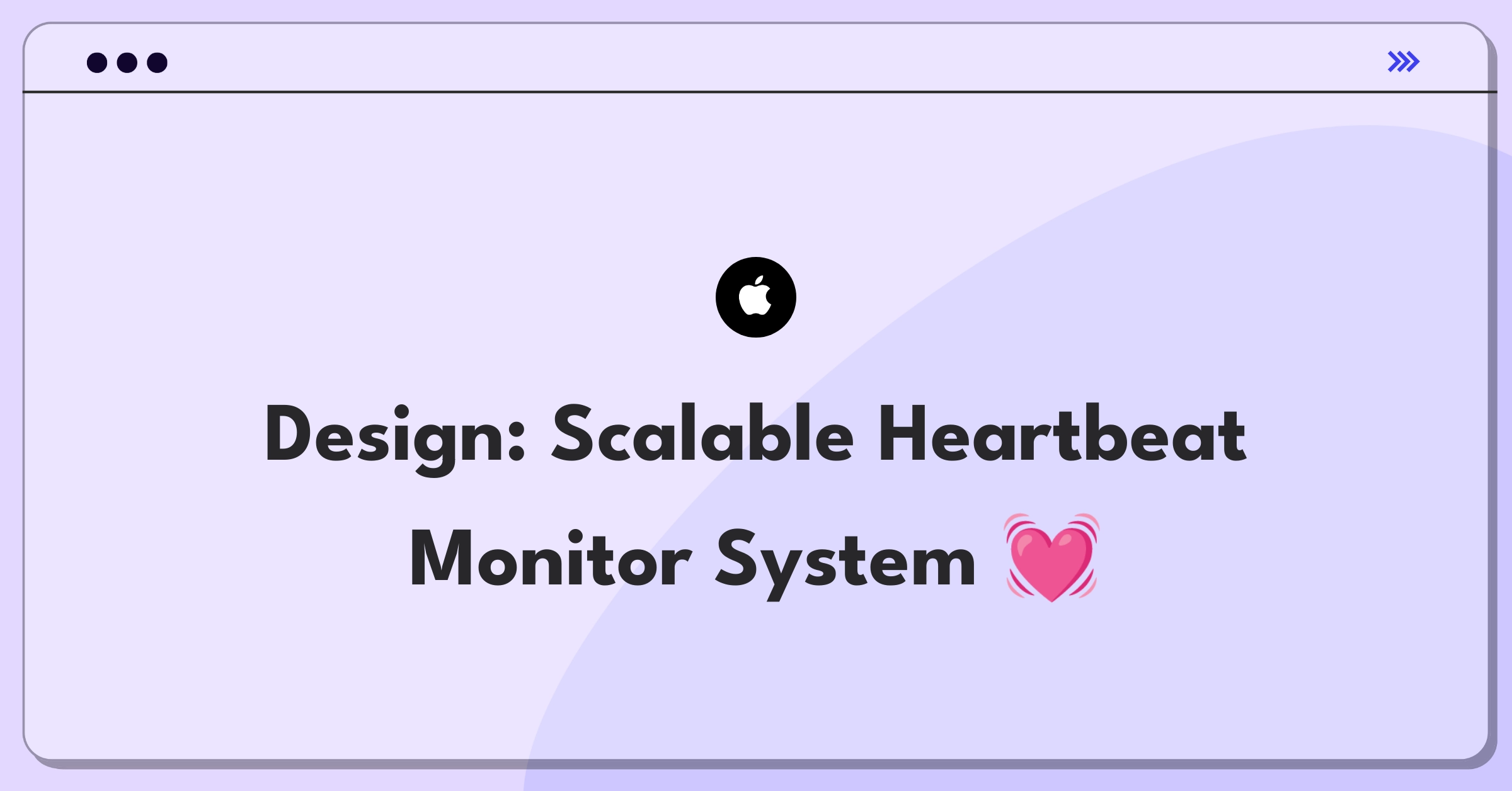Designing a Patient Heartbeat Monitoring System for HealthTech Inc.
To monitor a patient's heartbeat and calculate the average over the last 10 detections, we'll implement a real-time data processing system using a circular buffer for efficient storage and calculation of the moving average.
Introduction
The challenge at hand is to develop a robust system for monitoring patient heartbeats and calculating a rolling average. This task is critical for HealthTech Inc.'s patient monitoring platform, requiring a solution that balances real-time performance, accuracy, and scalability. I'll outline a comprehensive approach that addresses both the immediate technical requirements and long-term product considerations.
Tip
Ensure the solution prioritizes patient safety through reliable data processing and minimal latency.
Step 1
Clarify the Technical Requirements (3-4 minutes)
Before diving into the solution, I'd like to clarify a few key technical aspects:
-
Looking at the existing system architecture, I'm wondering about the current data ingestion pipeline. Could you provide insights into how heartbeat data is currently collected and processed?
Why it matters: Determines if we need to build a new system or integrate with existing infrastructure Expected answer: Data is collected via wearable devices and sent to a cloud-based system Impact on approach: Would influence our choice of data processing and storage solutions
-
Considering the critical nature of health monitoring, I'm curious about the real-time requirements for data processing and display. What's the maximum acceptable latency for updating the average heartbeat?
Why it matters: Affects our choice of processing algorithms and infrastructure Expected answer: Updates should be available within 1-2 seconds of new data Impact on approach: May require stream processing techniques for low-latency calculations
-
Regarding scalability, how many patients do we expect to monitor simultaneously, and what's the projected growth rate?
Why it matters: Influences our architecture design for horizontal scaling Expected answer: Currently monitoring 10,000 patients, expecting 50% year-over-year growth Impact on approach: Would necessitate a highly scalable, distributed system architecture
-
From a regulatory standpoint, are there specific data retention or privacy requirements we need to consider in our design?
Why it matters: Affects our data storage and processing strategies Expected answer: HIPAA compliance required, with data retention for 7 years Impact on approach: Would necessitate secure, compliant data handling and storage solutions
Assumptions:
- The system will receive heartbeat data as discrete events
- We need to calculate and store the average for each patient individually
- The solution should be designed for cloud deployment for scalability
Subscribe to access the full answer
Monthly Plan
The perfect plan for PMs who are in the final leg of their interview preparation
$99 /month
- Access to 8,000+ PM Questions
- 10 AI resume reviews credits
- Access to company guides
- Basic email support
- Access to community Q&A
Yearly Plan
The ultimate plan for aspiring PMs, SPMs and those preparing for big-tech
$99 $33 /month
- Everything in monthly plan
- Priority queue for AI resume review
- Monthly/Weekly newsletters
- Access to premium features
- Priority response to requested question


.png)